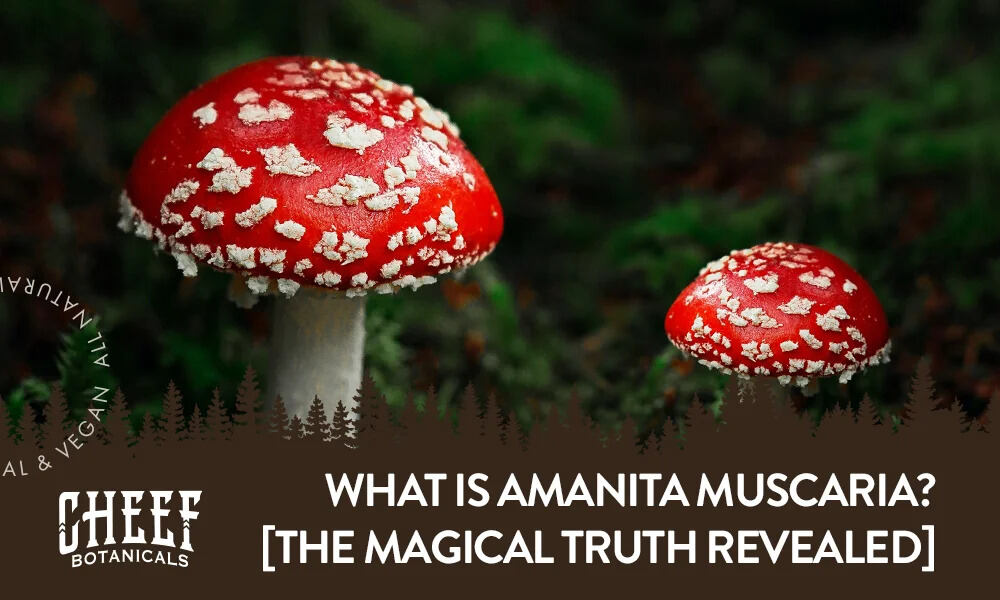Table of Contents
TogglePicture this: a small mushroom with a wide, bright red cap adorned with speckled white spots. Sound familiar? That’s because you’ve likely encountered this charming toadstool before in various fairytales, television shows, movies, video games, and seasonal decor. But little did you know this natural wonder might hold the key to unlocking your true potential. Prepare to become captivated by the enchanting Amanita muscaria mushroom!
For thousands of years, people from all walks of life have harnessed the power of Amanita muscaria as a euphoric gateway to experiencing extraordinary dreams, unleashing boundless creativity, and embarking on a journey of thought-provoking self-discovery. Curious about what Amanita muscaria holds in store for you? Read our comprehensive guide on this iconic mushroom’s history, benefits, and best practices, and learn how you can harness its magic to gain new insights and create a more meaningful existence. Get ready to navigate the depths of your subconscious and unravel the mysteries of your mind — the Amanita adventure awaits!
What Is Amanita muscaria?
Amanita muscaria (genus: Amanita, species: muscaria), also known as fly agaric, fly amanita, or fly mushroom, is a species of wild mushroom that contains powerful natural compounds that can unleash heightened mental experiences and induce soothing effects on the body.
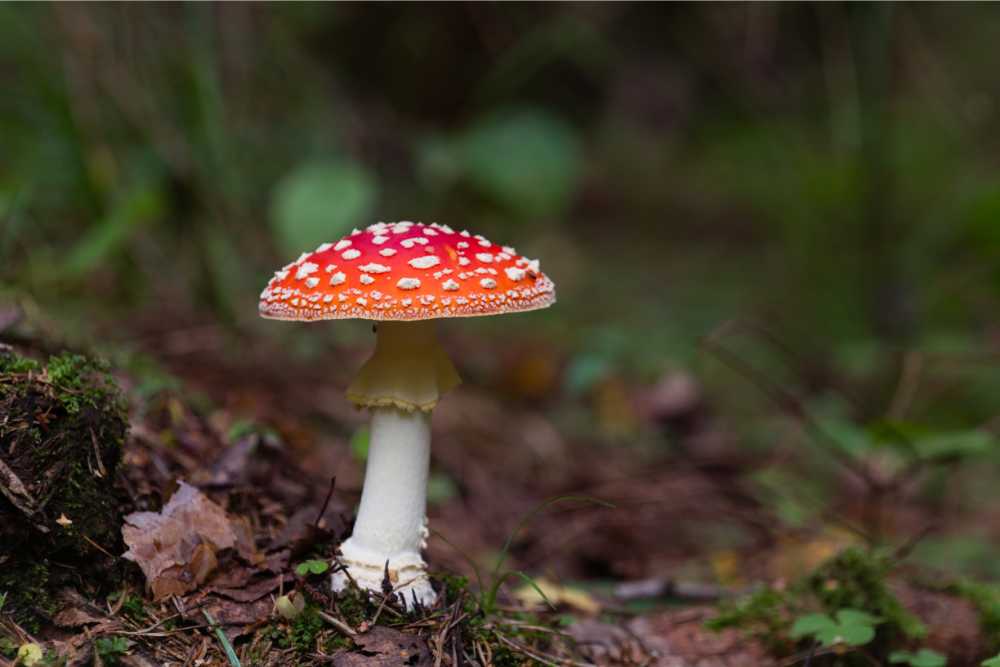
These potent effects have made fly agaric a revered and sacred component of various cultures throughout human history. But beyond its historical associations, Amanita muscaria is seen as a tool to help people navigate the depths of their subconscious and discover new understandings about life.
We’ll dive deeper into the rich history and amazing experiences of Amanita muscaria later in this guide. But for now, here’s a brief rundown of what Amanita muscaria can do for enthusiasts:
- Calming, elevated euphoria
- Vivid and lucid dreams
- Altered shifts in perspective
- Deep, soothing relaxation
Where Is Amanita muscaria Found?
Amanita muscaria typically grows in coniferous and deciduous woodlands and is native to the temperate, boreal regions of the Northern Hemisphere. However, this mushroom is a world traveler and can also be found in warmer regions such as Central America, the Mediterranean, and Central and South Asia. The mushroom is often found in a symbiotic relationship with birch and pine trees, where it exchanges nutrients for a mutually beneficial relationship.
Appearance and Characteristics of Amanita muscaria
Easily recognizable, Amanita muscaria mushrooms effortlessly stand out in the wild, especially amongst the loamy detritus of the forest floors they bloom from. This uniqueness is attributed to the fruiting body — the above-ground portion of the mushroom. Amanita muscaria boasts a wide, convex-shaped cap, typically 5-20 cm wide, with a vivid cherry-red color. Some caps may also be bulbous in shape.
Accentuating the bright red cap are irregularly-shaped white to white-yellow warts. The white-gilled underside of the cap gives way to a bright white stalk that sports a flimsy skirt-like veil that hangs down from the upper part of the stem. This distinct appearance of fly agaric mushrooms has made them a renowned symbol of enchantment and has contributed to their mesmerizing beauty.

Amanita muscaria Varieties
Despite their iconic look, bright red fly agaric mushrooms are often mistaken for other Amanita muscaria varieties. These varieties of the genus Amanita include both edible and poisonous mushrooms.
The classic variety we all know and love is Amanita muscaria var. muscaria. But the more common misidentifications include the:
- Highly regarded edible mushroom Amanita caesarea.
- Sweet-tasting edible Amanita basii.
- Brown-capped Amanita pantherina.
- Yellow-tinted Amanita muscaria var. guessowii.
- Off-white Amanita chrysoblema, also known as American fly agaric.
Traditional Uses of Amanita muscaria in Different Cultures
For thousands of years, various cultures around the world have harvested Amanita muscaria mushrooms and enjoyed their powerful benefits. Documented use dates back to prehistoric times before humans crossed the Bering Strait. As early humans migrated across the globe, so did the use of these potent mushrooms, particularly in Asia and Northern Europe.

About 3,500 years ago in South Asia, the Aryan people of ancient India would consume Soma, an inebriating elixir made from an unidentified plant. After scrutinizing Aryan hymns of the time, researcher R. Gordon Wasson suggested that the plant in question was not a plant at all but a fungus — Amanita muscaria.
Ancient Greeks also had their own version of Soma, enjoyed amongst worshippers of Dionysus, the god of fertility. Worshippers appreciated the pleasurable effects of this drink and would indulge in its rapturous, dreamy euphoria during Ambrosia, a festival held during the height of the mushroom season in October.
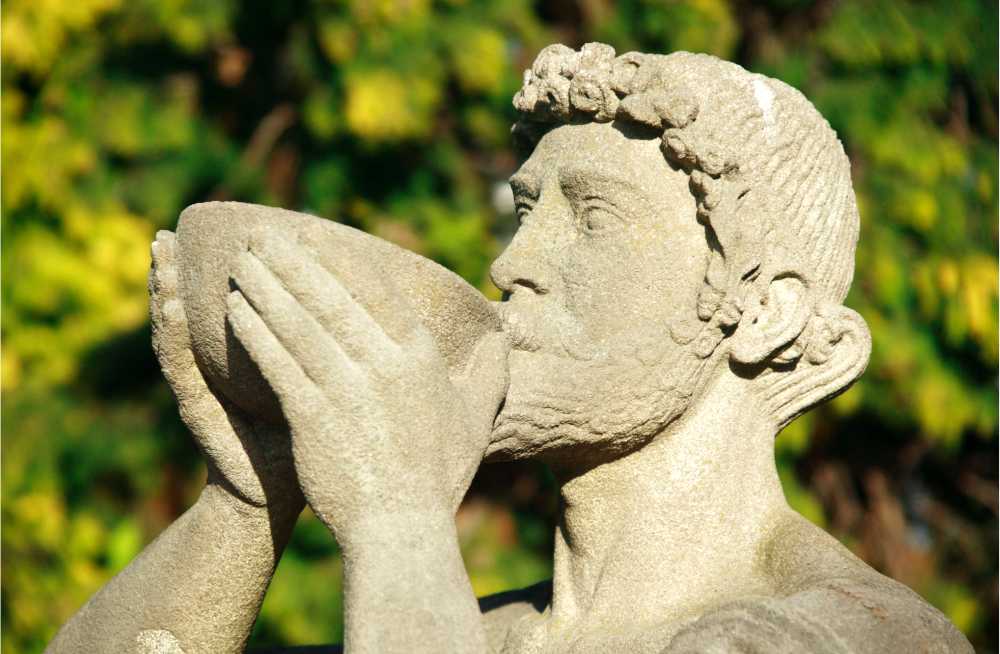
Celtic Druids believed that fly agaric mushrooms were vessels of ancient wisdom that brought consumers into direct communication with the cosmos. Visions of leprechauns and faeries were frequent, making the mushroom a staple of Irish folklore that still endures to this day.
Pre-Christian Siberia made frequent use of fly agaric shamanism for various ceremonies. For the Koryaks and Chuchkis, the indigenous peoples of Eastern Siberia, Amanita muscaria use was essential for transcendent connections.

As civilizations rose and fell and human history evolved, Amanita muscaria endured as a symbol of humanity’s connection to the natural world. Fast forward to today, and that fascination still exists. It’s one of the reasons why this consciousness-expanding mushroom has entered the mainstream and why many wellness-minded individuals are looking to Amanita muscaria to provide respite from the unrelentingly fast-paced and often frustrating modern world.
Active Compounds in Amanita muscaria
The active compounds in Amanita muscaria are muscimol and ibotenic acid. These compounds are mostly concentrated in the cap and are the key players behind the one-of-a-kind effects of fly agaric. Muscimol is the main compound responsible for the mushroom’s powerful shift in perspective and uplifting feelings.
Interestingly, ibotenic acid contributes to the overall effects of this divine mushroom by breaking down into muscimol naturally through a process called decarboxylation. The dynamic relationship between these two compounds is what gives enthusiasts of this magic mushroom such a powerful and unforgettable experience.
Veteran Amanita muscaria foragers stress that the ratio of ibotenic acid and muscimol per mushroom varies widely across regions and seasons. This can result in variability in the amount of active compounds in Amanita muscaria fruit bodies. For example, spring and summer mushrooms typically contain different concentrations of these compounds.
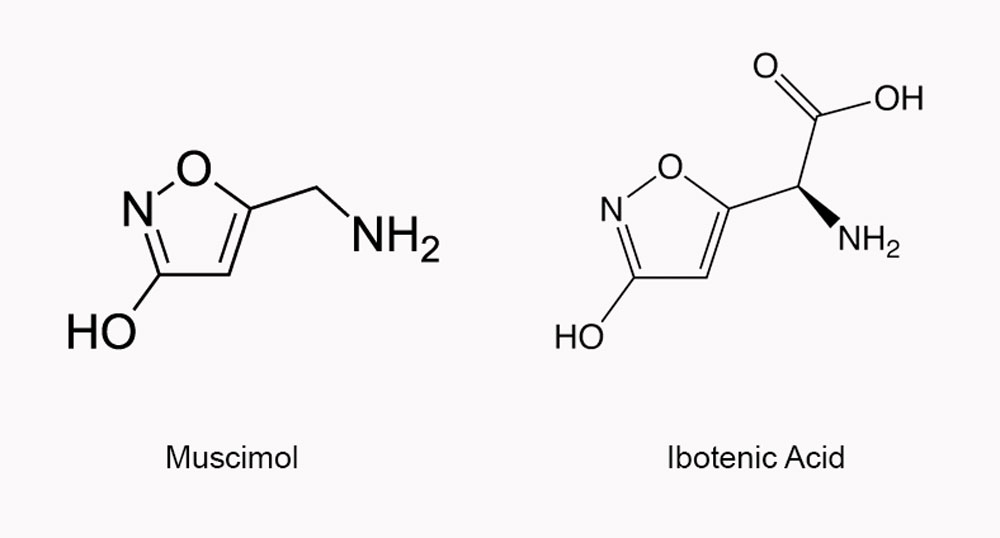
Is Amanita muscaria Poisonous?
Technically speaking, Amanita muscaria is considered a poisonous mushroom, but only when ingested in its raw, natural form and in excessive amounts. Suppose you’re mushroom foraging, and you come upon these mushrooms. In that case, we highly recommend not eating them. Raw Amanita muscaria ingestion can be quite uncomfortable and lead to stomach cramps. However, death is highly unlikely from Amanita muscaria poisoning.
According to the North American Mycological Association (NAMA), there have been no reliably documented cases of fly agaric-related death in the past 100 years. Although death is extremely rare for humans, the opposite is true for insects, especially flies. An effective fly trap, Amanita muscaria gets the name “fly agaric” from its effectiveness at killing these pesky insects.
Mushroom poisoning caused by Amanita muscaria is primarily attributed to ibotenic acid, a potent compound found in the mushroom. The effects of ibotenic acid are entirely dose-dependent, and consuming small amounts is negligible. But extremely high doses have the potential to cause neurotoxic effects.
However, you can detoxify fly agaric mushrooms effortlessly by boiling them, a technique practiced by enthusiasts for thousands of years. Boiling removes the majority of ibotenic acid, making the mushrooms mostly benign.
Is Amanita muscaria Legal?
Amanita muscaria is 100% legal at both the federal and state level. The lone exception is the state of Louisiana, which outlawed the cultivation, possession, and sale of Amanita muscaria in 2005. However, the state does allow the use of fly agarics strictly for decorative landscaping purposes only. So if you want to add a touch of whimsy to your garden gnome statue, Amanita muscaria could be just what you’re looking for!
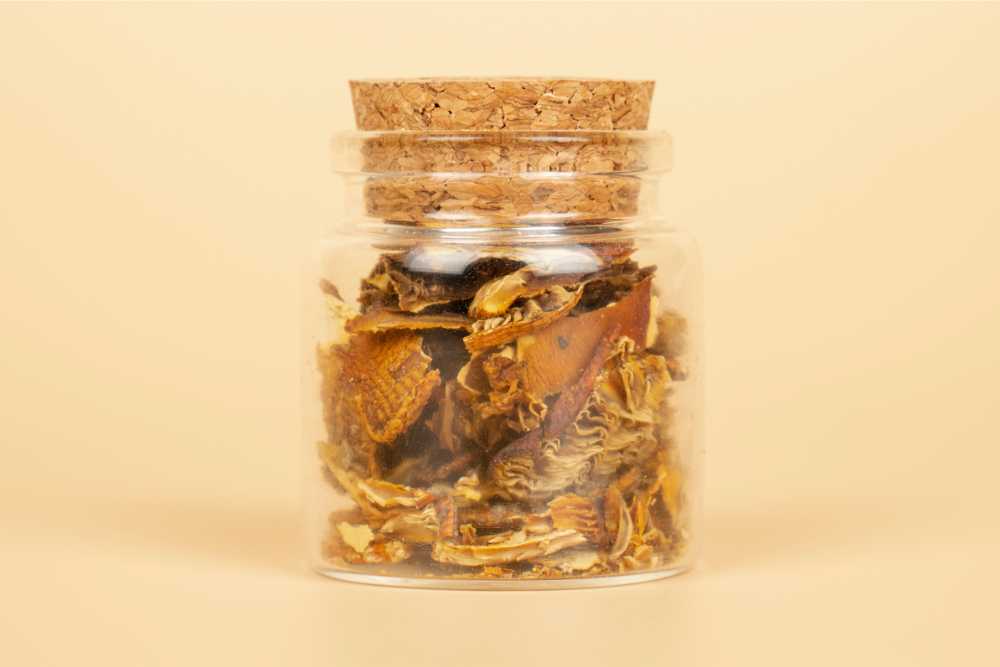
Is Amanita muscaria Psychedelic?
Contrary to popular belief, Amanita muscaria is not a psychedelic mushroom! Psychedelics are illegal and engage your brain’s serotonin receptors, whereas Amanita muscaria is federally legal and acts via a different pathway altogether. Let’s break this down further.
Does Amanita muscaria Contain Psilocin or Psilocybin?
Amanita muscaria mushrooms do not contain psilocin or psilocybin, the main compounds in psychedelic mushrooms or shrooms. It’s important to note that psilocybin is biologically inactive. But when it’s consumed, it gets converted into the hallucinogenic psilocin.
While psilocin typically causes altered perceptions and joyful emotions, Amanita mushrooms contain muscimol, which produces heightened euphoria that is relaxing and calmative.
How Does Amanita muscaria Work?
Unlike psychedelics, which target your body’s serotonin receptors, muscimol acts via a different pathway to produce a unique experience. Muscimol mimics the action of gamma-aminobutyric acid (GABA), a neurotransmitter that slows your brain down, resulting in a relaxed state.
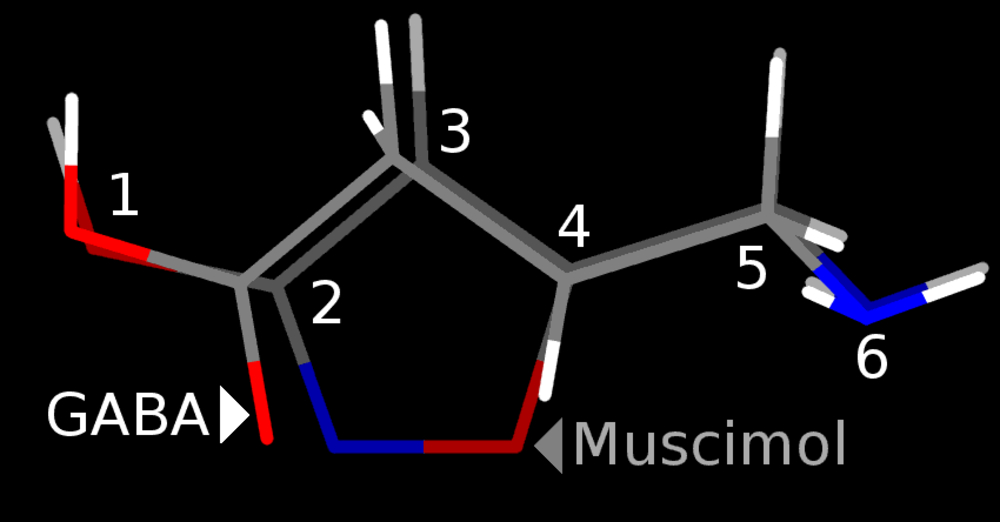
Once muscimol enters your body, it navigates through the blood-brain barrier and interacts with the GABA receptors in your brain and central nervous system (CNS). This special interaction has a remarkable impact on your neurons, slowing their activity and resulting in a wonderful sense of calmness, among other unique sensory stimuli.
Does Amanita muscaria Produce Euphoric Feelings?
Depending on how much Amanita muscaria you take, expect a general feeling of calming relaxation punctuated by altered visual and auditory perceptions that give way to deep sleep. When asleep, anticipate an ethereal kaleidoscope of immersive and vivid dreams that blur the lines between fantasy and reality. You’ll wake up to a new and refreshed perspective.
It’s important to note that Amanita muscaria’s effects are entirely dose-dependent. So treat it with caution, don’t overdo it, and stay within your limits for an optimal experience.
Finding the Right Amanita muscaria Amount
Discovering the ideal amount for Amanita mushrooms can be challenging. According to enthusiasts, a low amount typically ranges from 1-3 grams of prepared mushroom. For those seeking a more euphoric experience, a minimum of 5 grams is generally recommended. However, it’s important that you start with a smaller amount to ensure a safe and enjoyable journey.

Best Practices for Taking Amanita muscaria
As we previously mentioned, Amanita muscaria mushrooms must be detoxified before they are taken. Raw Amanita muscaria consumption is neither widespread nor recommended, as it can be harmful and produce mild toxicity. But don’t worry, detoxifying this little red mushroom is pretty simple.
Historical use of fly agaric fruiting bodies starts with boiling the cap, which removes most of the toxicity. Before boiling, make sure to discard the stems, as they may contain larvae and have insignificant amounts of active compounds. Once boiled, toss the water, and dry the cap. It’s now ready for you to enjoy.
While the power of this wondrous mushroom is undeniable, enthusiasts admit that the boiled, dry cap could be more palatable. Just don’t tell that to the Japanese, Finns, Lithuanians, and Russians, all of whom use a traditional pickling technique to consume it. One of the most popular and preferred methods among long-time connoisseurs is to boil the cap down even further into an infusion. This makes it easy for fans to receive all the perks of Amanita muscaria without sacrificing their taste buds.
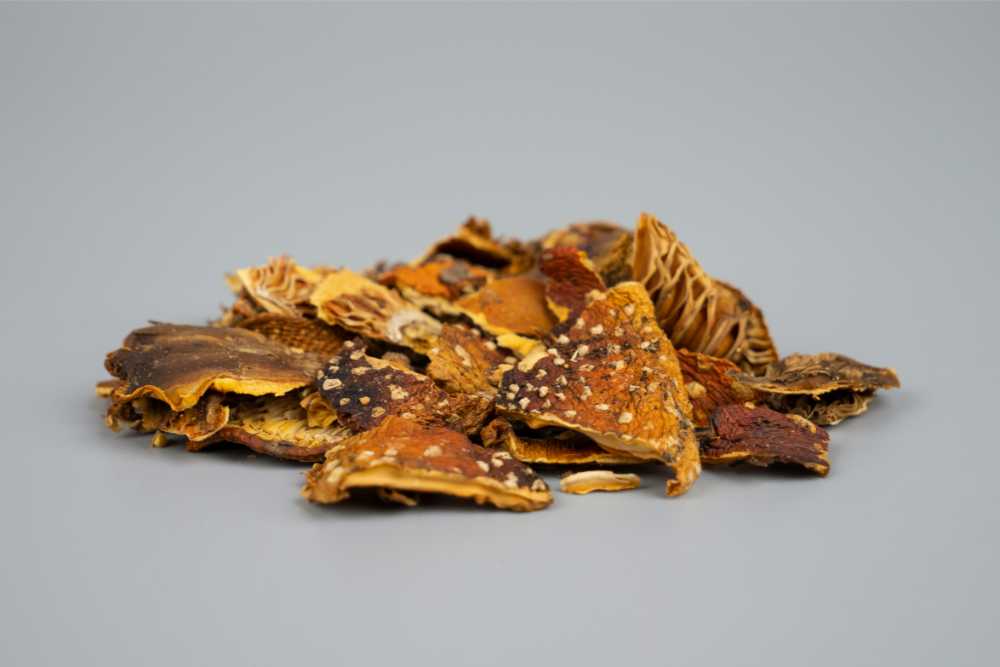
It’s important to note that the use of Amanita muscaria requires adhering to established best practices and always prioritizing safety. Be aware of a personal tolerance to these wild mushrooms, as the potency can vary depending on the preparation method and form factor. Always start with a small amount, wait a few hours to see how you feel, and then gradually increase the amount until you reach your desired effects.
Before adding Amanita muscaria to a wellness routine, assess factors such as age, weight, metabolism, underlying health issues, and prior experience. If enthusiasts are unsure of how this ancient mushroom may impact them, consult a licensed healthcare practitioner to ensure it’s safe to take.
The Amanita muscaria Experience: Calmly Explore the Farthest Reaches of Your Mind
Words can never accurately describe the Amanita muscaria experience. To truly comprehend it, you have to feel it for yourself. The mushroom’s effects typically manifest within 30-90 minutes after taking. What you’ll experience is a unique journey into the untapped reservoirs of your innermost being.
How exactly will this journey manifest itself? That’s unique to each individual. However, here’s a sampling of what you may expect on your voyage with Amanita muscaria as your guide.
Exhilarating Ecstasy
As the mushroom’s compounds start to permeate your mind and body, a diverse array of sensations will start to unfold. Slowly but surely, the consciousness-expanding nature of Amanita muscaria starts to become revealed. A cornucopia of repetitive and sometimes bewildering thoughts begin to take hold. Your mind will dance in the delightful disarray of perceptions that begin to blur the lines between reality and dreams.

Hypnotic Tranquility
Accentuating these rapturous effects are calmative qualities that slowly coax the body into a state of deep, penetrating relaxation. You’ll feel a warm tide of tranquility wash away your stress and ease you into the welcoming and worry-free embrace of sleep. This relaxed state allows you to journey into a dream world filled with introspection and unique, hypnotic sensations.

Illuminating Euphoria
Amidst these swirling sensations emerges a blissful state of euphoria that transcends the ordinary. The world takes on a radiant glow, and even the most mundane objects can appear imbued with inspiring iridescence. As you succumb to slumber, your mind continues to stay awake, leading to euphoric, detailed dreams. Colors may become more vibrant, shapes more elaborate, and sizes more contorted as the mushroom reshapes your perspective into one that invites you to view the world through a clearer, more different lens.
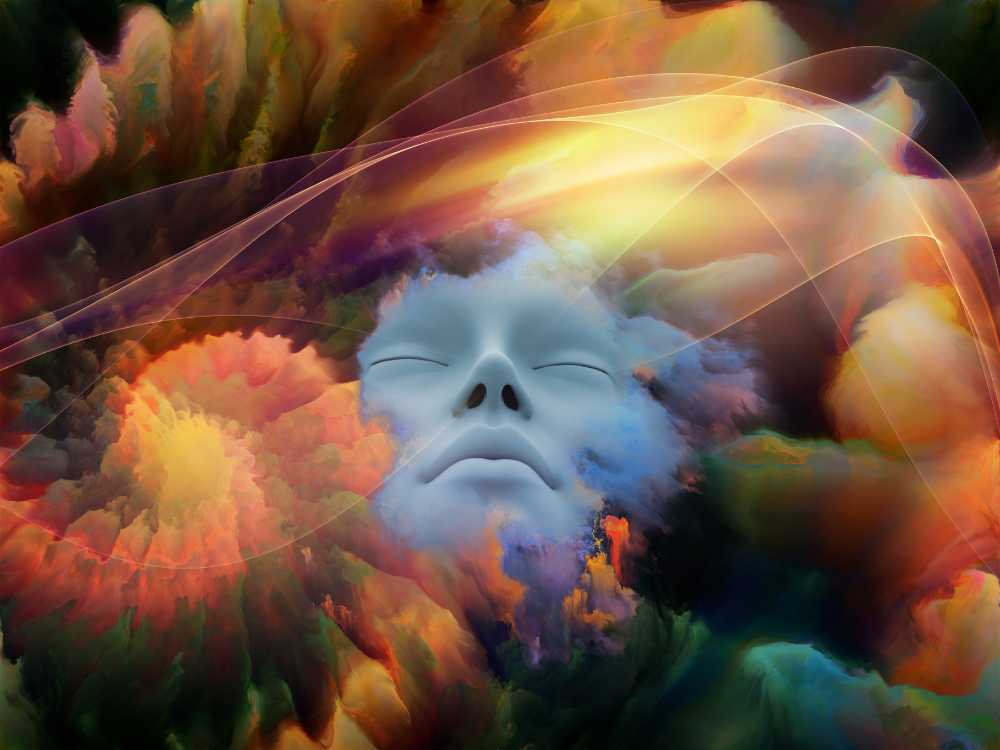
Reconnecting With the Physical Realm
Visions, both vivid and powerful, may grace your journey down the rabbit hole that is Amanita muscaria. These visions can range from mundane to jaw-dropping, providing a window into the deepest recesses of your mind. Travelers have returned from their inner expedition with newfound insights and profound understandings of the interconnectedness of life. Aspiring, inspiring, and affirming, this is what the Amanita muscaria experience can hold for you.

Potential Side Effects of Amanita muscaria
Amanita muscaria is generally considered very safe when prepared and taken correctly. Although the mushroom’s potent properties contribute to its unique experiences, enthusiasts should be aware of the potential side effects that may arise from overdoing it. That’s why newbies and experienced enthusiasts need to take it slow and stay within their tolerable range when exploring this red and white mushroom.
Some of the potential side effects of overindulging in the fly agaric mushroom include:
- Gastrointestinal distress
- Frequent urination
- Excessive salivation
- Sweating
- Blurry vision
- Lethargy
One can easily avoid these potential symptoms by consuming fly agarics responsibly. And if these side effects do occur, one should stay calm, drink some water, and situate themselves in a safe space until the symptoms subside.
Amanita muscaria (Fly Agaric) In Modern Culture: Art, Literature, and Popular Media
The enigmatic allure of Amanita muscaria continues to capture our imagination to this day. Its imagery is steeped in our modern culture, quietly and, in some cases, rather obviously, weaving itself throughout popular media. Yet we probably didn’t even know about its presence until now. Here are just some of the countless depictions of Amanita muscaria in various forms of modern art, literature, and media that you will surely recognize.
Amanita muscaria in Contemporary Art
The mushroom has become a staple of various contemporary Fantasy and Visionary artists. American artist Alex Grey, famed for his visually inspiring and often intricate paintings exploring themes of consciousness, depicted the mushroom in his appropriately titled “Fly Agaric.”
Martina Hoffman’s “Amanita Dream,” Amanda Sage’s “Amanita muscaria,” and Mark Henson’s “Entheogen” are also examples of various Visionary artists who have taken the mushroom’s appeal and translated it into visually arresting pieces of art.
Amanita muscaria in Television, Film & Literature
You may have seen these vibrant white spotted mushrooms in some of your favorite fantasy worlds in film and on TV. Remember the dancing mushroom sequence in Walt Disney’s 1940 masterpiece “Fantasia”? How about “The Smurfs” cozy homes?
Fans of Lewis Carroll’s “Alice’s Adventures in Wonderland” and Disney’s animated and live-action adaptations will recognize the hookah-smoking caterpillar perched atop a giant mushroom. When Alice takes a bite of the mushroom, she changes size, an obvious reference to the altered perceptions Amanita muscaria can produce.
The Mario Mushroom & Other Video Games
Video game enthusiasts will surely recognize Amanita muscaria mushrooms from the “Super Mario Bros.” series. The red and white spotted mushroom’s imagery is constant throughout the iconic video game franchise — from the game’s setting in the appropriately named Mushroom Kingdom to its colorful array of mushroom-humanoid inhabitants to Toad, the loyal attendant of Princess Peach.
These iconic mushrooms have also been featured in “The Elder Scrolls V: Skyrim” as ingredients for magical potions and elixirs. And fans of “Assassin’s Creed Valhalla” will find fly agaric mushrooms scattered throughout the captivating game world of Anglo-Saxon England.
The Christmas Mushroom
Amanita muscaria‘s long association with Christmas dates back to early Christian rituals in Northern Europe during the winter solstice celebrations, which heavily utilized these white-spotted and red mushrooms in ceremonies. Affectionately known as “The Christmas Mushroom,” Amanita muscaria is frequently depicted in holiday imagery.

It’s often claimed that the white and red mushroom species inspired the color palate of Santa Claus’ outfit. So the next time you receive a Christmas card adorned with classic yuletide imagery, look for Amanita muscaria mushrooms tucked away in the timeless and festive artwork.
Final Thoughts — What Is Amanita muscaria (Fly Agaric)? The Magical Truth About This Red & White Mushroom
Amanita muscaria mushrooms — those iconic little bright red, white-spotted fungi you’ve probably seen somewhere before — have left an indelible mark on humankind. Since prehistoric times, these euphoric fungi have served as a mystical gateway to unlocking the mysteries of the human subconscious. A misunderstood mushroom, Amanita muscaria is not a psychedelic and is completely legal, making it more accessible than ever. Another misconception is that it is extremely poisonous. However, when prepared correctly, Amanita muscaria is safe for humans to enjoy, as it has been for thousands of years.
The secret to the Amanita muscaria experience lies in muscimol, the mushroom’s main euphoric compound that effortlessly transports mind and body into a state of pure bliss, providing deep relaxation and vivid, captivating dreams. What results is a new you filled with inspiration, drive, and self-assurance. Are you ready to embark on a transcendental adventure like no other? Explore the transformative potential of Amanita muscaria for yourself, and embark on a journey of self-discovery!

